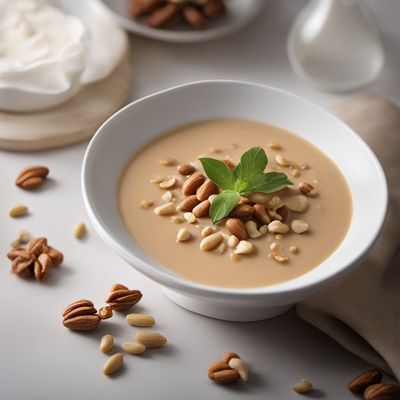
Ingredient
Sweet potatoes and similar-
The Versatile Tubers
Sweet potatoes and similar tubers, such as yams and purple potatoes, are root vegetables with a firm yet creamy texture. They come in various colors, including orange, yellow, and purple, and offer a naturally sweet flavor with earthy undertones. These tubers are a staple in many cuisines around the world.
Origins and history
Sweet potatoes are believed to have originated in Central or South America thousands of years ago. They were cultivated by indigenous peoples and later introduced to other regions by explorers and traders. Today, they are widely consumed in countries like the United States, China, and India.
Nutritional information
Sweet potatoes and similar tubers are rich in dietary fiber, vitamins A and C, and potassium. They are also a good source of antioxidants and have a lower glycemic index compared to regular potatoes.
Allergens
There are no known allergens associated with sweet potatoes and similar tubers.
How to select
When selecting sweet potatoes and similar tubers, choose ones that are firm and free from soft spots or blemishes. Look for smooth skin and avoid any tubers with sprouts or signs of decay. Opt for smaller to medium-sized tubers, as they tend to be sweeter and have a better texture.
Storage recommendations
To prolong the shelf life of sweet potatoes and similar tubers, store them in a cool, dark place with good ventilation. Avoid storing them in the refrigerator, as the cold temperature can alter their texture and taste. Use within a few weeks for optimal freshness.
How to produce
Sweet potatoes and similar tubers can be grown in a variety of climates, depending on the specific variety. They require well-drained soil and regular watering. They can be propagated from slips (young shoots) or by planting whole tubers.
Preparation tips
Sweet potatoes and similar tubers can be prepared in numerous ways, including roasting, boiling, mashing, and baking. They can be used in both sweet and savory dishes, such as fries, casseroles, pies, and puddings. Experiment with different spices and herbs to enhance their natural flavors.
Substitutions
Regular potatoes can be used as a substitute for sweet potatoes in most recipes, although the taste and texture will differ slightly. Other suitable substitutes include butternut squash, pumpkin, and carrots, depending on the desired outcome.
Culinary uses
Sweet potatoes and similar tubers are widely used in various cuisines around the world. They are commonly found in dishes like sweet potato fries, mashed sweet potatoes, sweet potato pie, and curries. They are also a popular ingredient in Thanksgiving and holiday recipes.
Availability
Sweet potatoes and similar tubers are cultivated and consumed in many countries, including the United States, China, India, Japan, and African nations. They are also grown in tropical regions and can be found in local markets and supermarkets worldwide.
More ingredients from this category
Recipes using Sweet potatoes and similar-

Dacquoise with Raspberry Cream
Heavenly Layers: Raspberry Dacquoise Delight

Liaoning-style Seafood Bisque
Savory Seafood Delight: Liaoning-style Bisque

Setteveli - Italian Chocolate Hazelnut Cake
Decadent Delights: Indulge in the Irresistible Setteveli Cake

Danish Cream-filled Lamingtons
Decadent Cream-filled Delights: Danish Lamingtons

Creamy Peanut Soup with Truffle Foam
Indulgent Elevation: Creamy Peanut Soup with a Touch of Truffle

Passion Fruit Mousse
Tropical Delight: Passion Fruit Mousse

Creamy Pumpkin Soup
Velvety Delight: Creamy Pumpkin Soup
